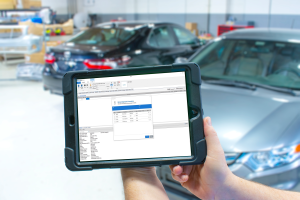A rise in manufacturer incentives led to a reduction in the prices of new vehicles in March, according to data from Kelley Blue Book, a Cox Automotive company. This shift is attributed to a surge in vehicle supply and aggressive pricing strategies aimed at boosting sales.
The average transaction price (ATP) for new vehicles in the U.S. in March was $47,218, reflecting a 1% decrease from the same month a year ago and a 5.4% reduction from the peak in December 2022. Despite these declines, prices still show a 15.5% increase compared to March 2021.
The increase in inventory has been a critical factor, with a 52% jump from the previous year, reaching nearly 2.74 million units.
Sales were down in March compared to February, but with a seasonally adjusted annual rate (SAAR) of sales of 15.5 million, 2024 remains on track to be the best new-vehicle sales year since 2019.
"A healthy 15.5 million new car SAAR is welcome as consumers enjoy lower prices thanks to significant supply recovery and a doubling of incentive spend compared to last March," said Erin Keating, executive analyst for Cox Automotive. "However, it bears repeating that historically high interest rates and associated inflation combined with an ever-widening deficit of available vehicles at lower price points, will continue to challenge affordability for most car buyers."
Higher Incentives Hold New-Vehicle Prices Down
The average incentive spend from manufacturers increased 11% to $3,121, which was up 102% year over year. Reaching the highest level since May 2021, incentives as a percentage of average transaction price increased to 6.6%, up from 5.9% in February and more than double the average of 3.2% recorded in March one year ago. After hitting a low of 2.1% of ATP in September 2022, incentives have steadily increased along with inventory.
In March, incentives in the luxury market averaged 7.5% of ATP, down from February and more than twice the level seen one year ago. The luxury ATP in March was $62,067, a decrease from February.
Non-luxury vehicle incentives averaged 6.4% in March, an increase from 3.8% in February. Non-luxury vehicle ATPs last month were $44,083, down from February when prices were estimated at $44,548.
Consumers Have Fewer Affordable New-Vehicle Options
The industry's vehicle mix and focus on luxury continue to make affording a new vehicle more difficult for the average consumer. In March, of the roughly 275 new-vehicle models available in the U.S. market, only eight had ATPs below $25,000 and only two transacted for less than $20,000. The discontinued Kia Rio and Mitsubishi Mirage remained the two most affordable vehicles in the U.S. last month. In March 2021, more than 20 vehicles had transaction prices routinely below $25,000, including seven different models transacting below $20,000.
Last month, 30 different vehicles posted average transaction prices over $100,000, with the Mercedes G-Class on top with an ATP of $208,663. In fact, the March Kelley Blue Book report showed significantly more vehicles in the U.S. transact at prices above $75,000 (sales of more than 81,000) than below $25,000 (nearly 52,000).
According to the latest Cox Automotive/Moody Analytics Vehicle Affordability Index, new-vehicle affordability moved positively for consumers to the best level in 31 months. Still, affordability remained far worse than it was in 2019.
Kelley Blue Book estimates exclude exotic brands, including Ferrari, Lamborghini and Rolls Royce.
EV Prices Increase in March
The average price Americans paid for an electric vehicle in March was $54,021, up from a revised $53,707 in February. EV transaction prices in March were lower year over year by 9.7%, compared to February, when prices were lower by 10.5% year over year.
"Notably, lower EV prices have supported EV sales volume in the U.S., particularly for key Tesla models," said Stephanie Valdez Streaty, director of Industry Insights at Cox Automotive. "The average transaction price for a new EV decreased by 9.0% in Q1 compared to Q1 2023 and dropped 3.8% quarter over quarter. However, as noted in our Q1 EV sales report, lower EV prices have not generated appreciably higher sales volume so far."
After a quarter of overall EV prices being pulled down by Tesla's price cuts, the market's general EV price increased this month, partly due to increased prices for the Tesla Model 3. Transaction prices for the Model 3 last month, at $46,169, were lower year over year by 5.6% but up 6.7% month over month. Incentives on the Model 3 were 8.2% of ATP, or $3,778. Tesla's overall incentives were 11.8% of ATP in March but were not the highest among EV manufacturers.
In March, incentives at Polestar were 14.4% of ATP, and Lucid was 13.6%. High incentives and discounts on most EV models continue to play a role in lower EV prices.









